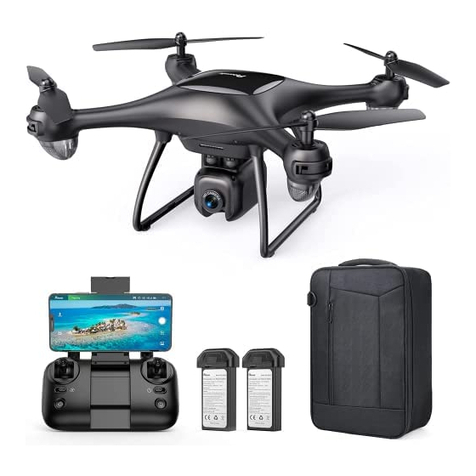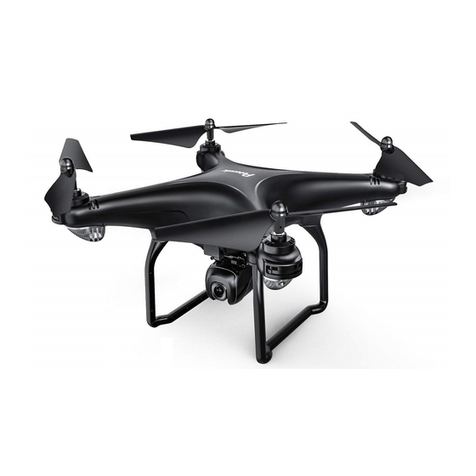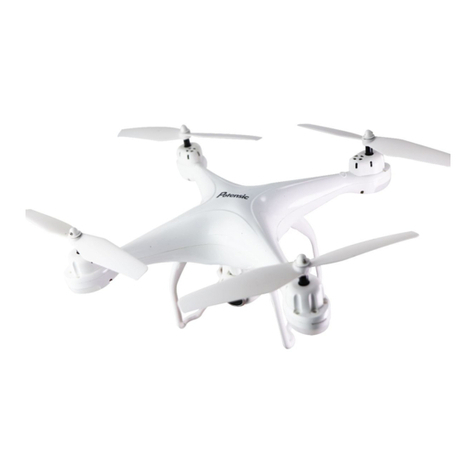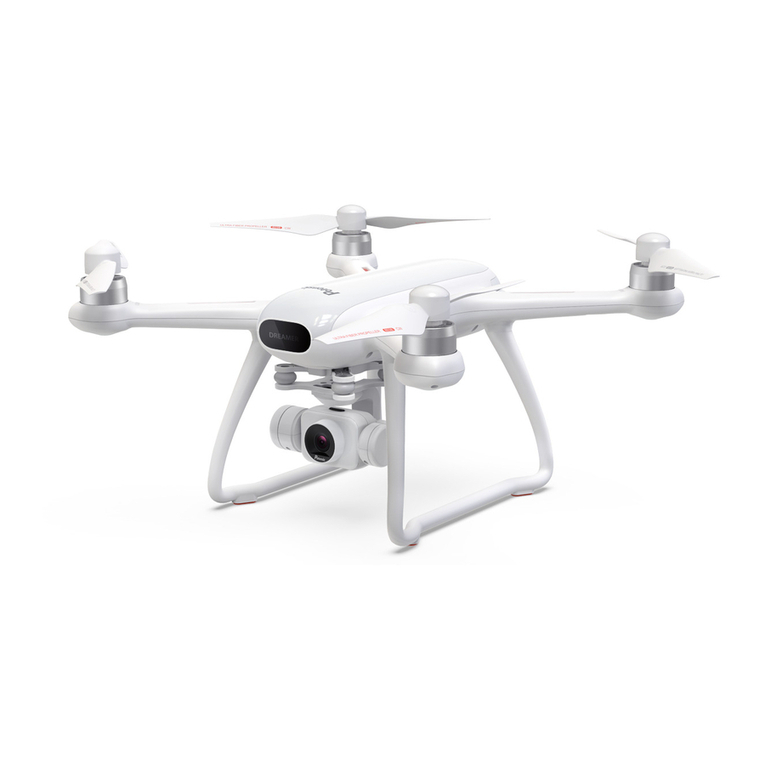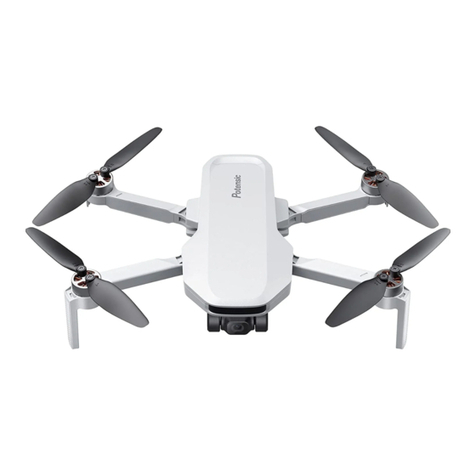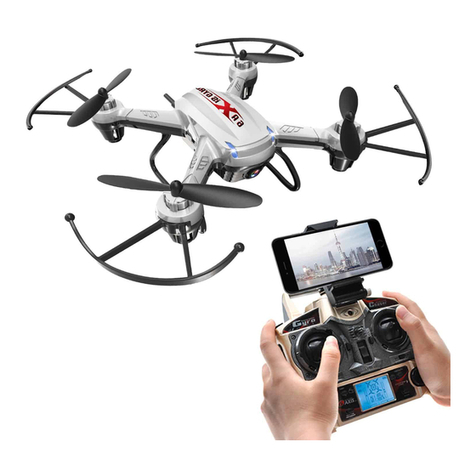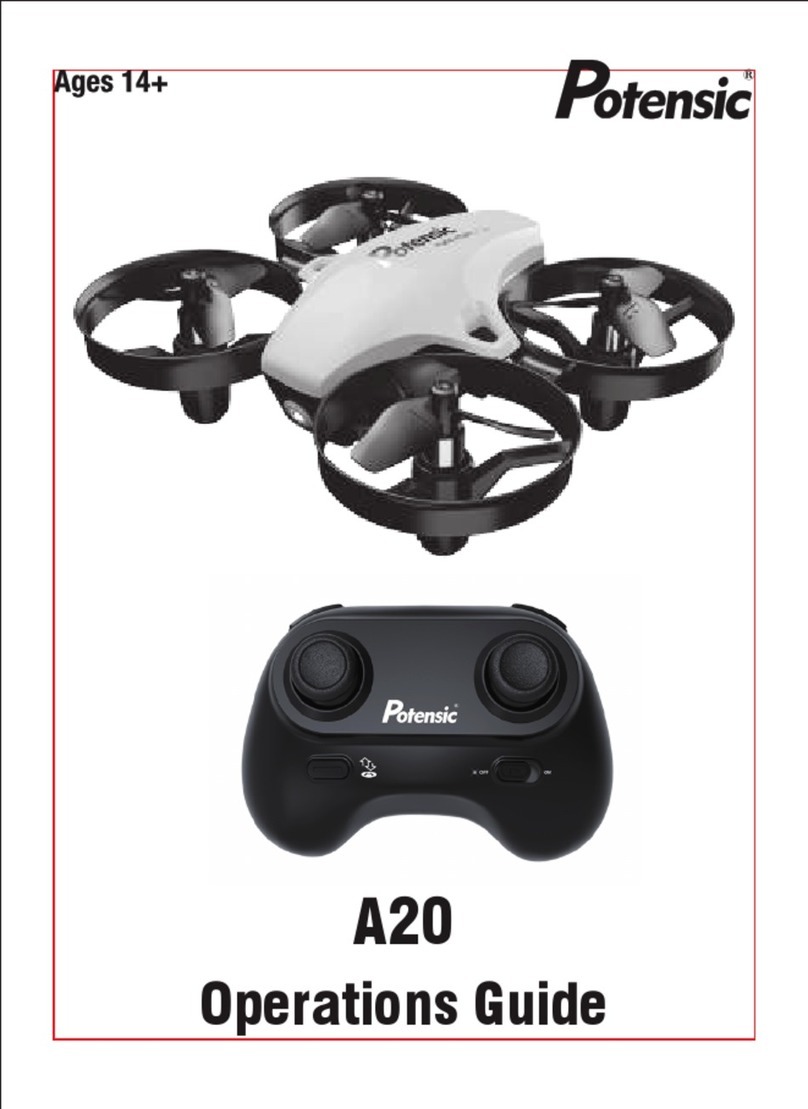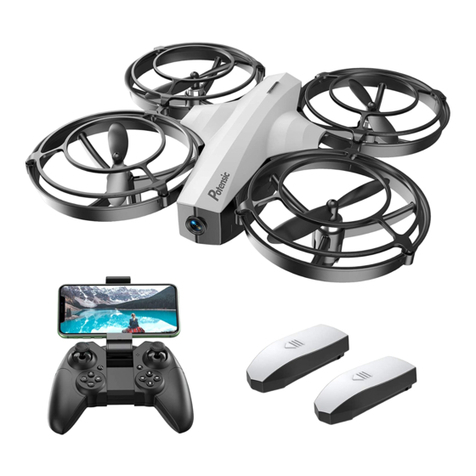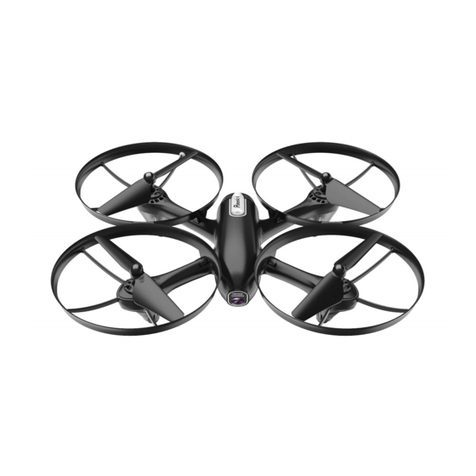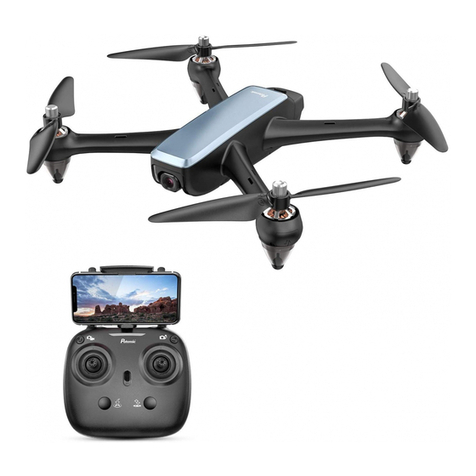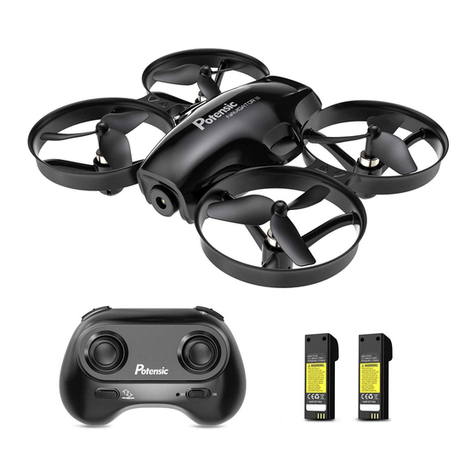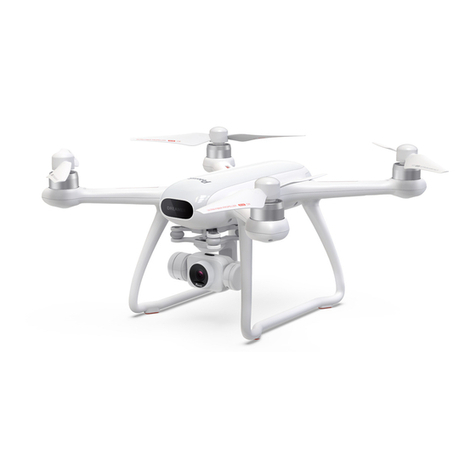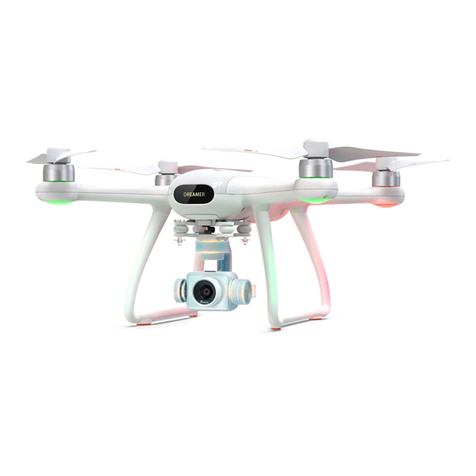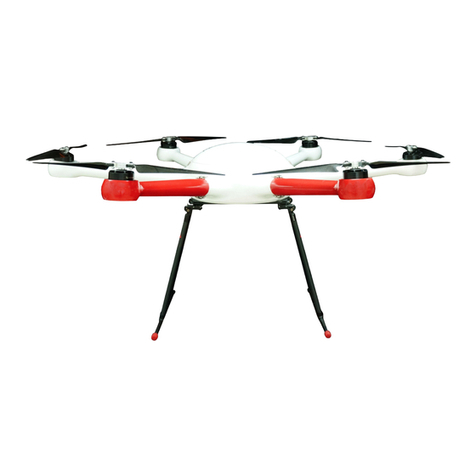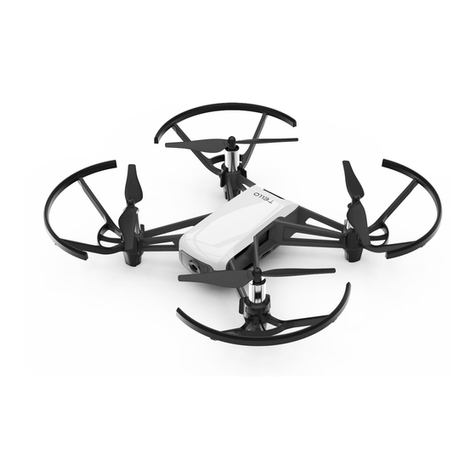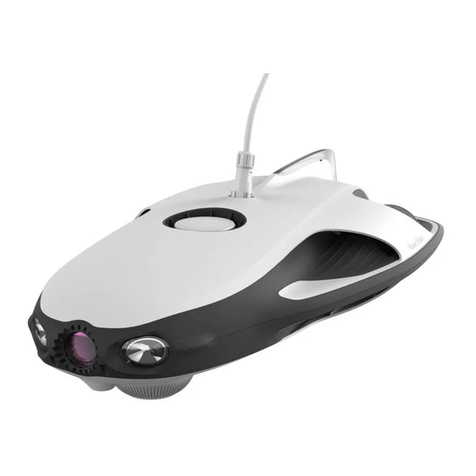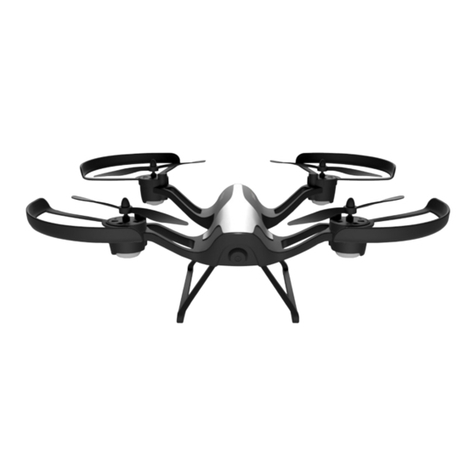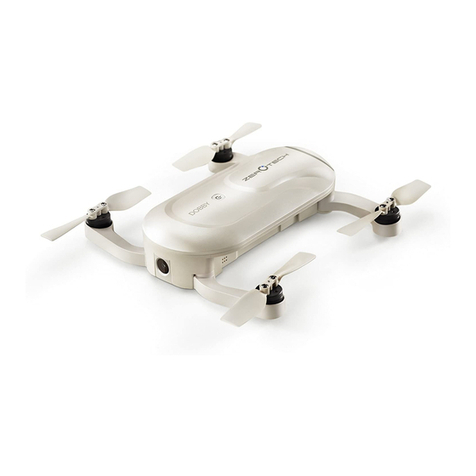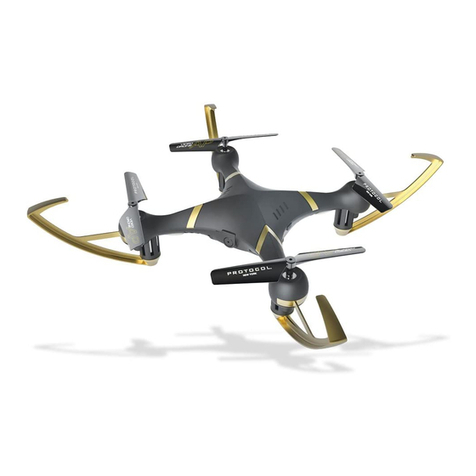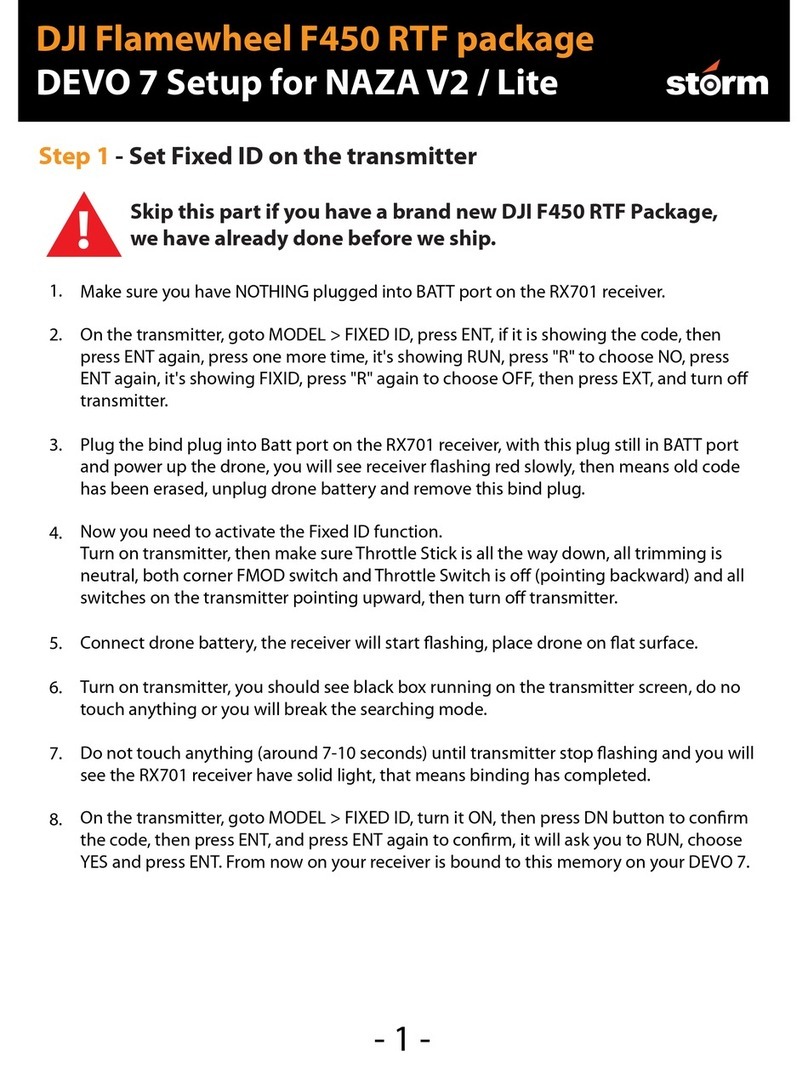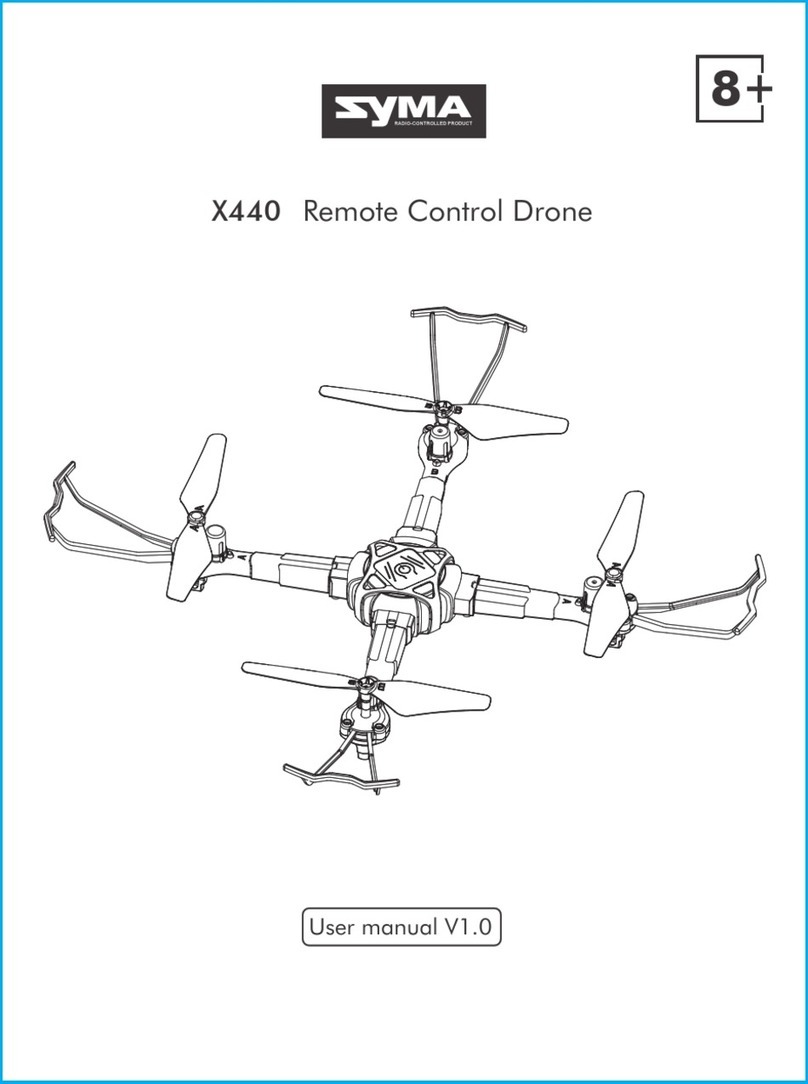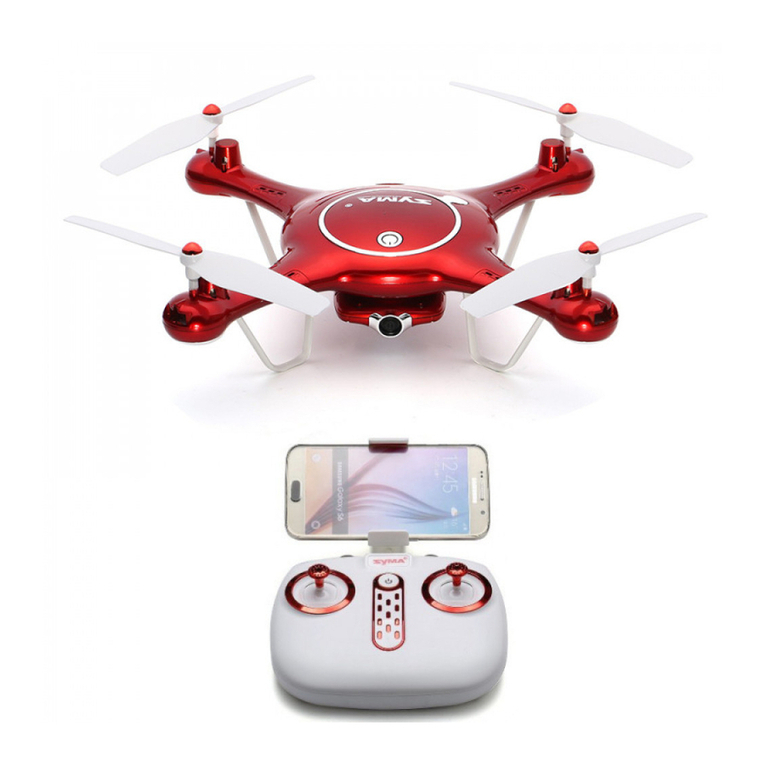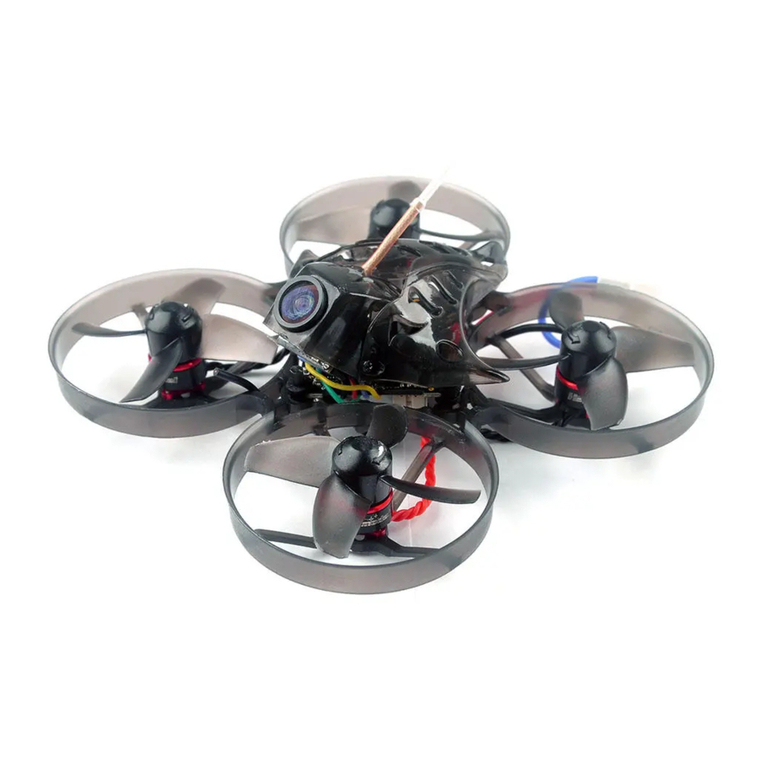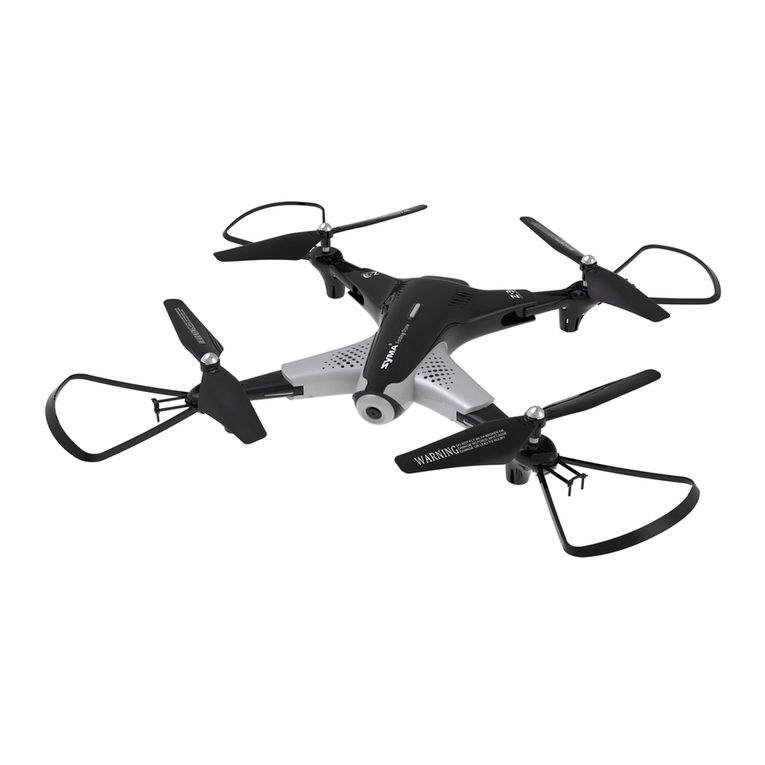
- 07 -
Remote Control
Wisp adopts a 2.4Ghz remote controller with complete function buttons, which can
complete various operations and settings between the aircraft and the camera within
the maximum communication distance of 50 meters. It can also display high-defini-
tion images on mobile devices in real time through Potensic-Toy app (smoothly
image transmission within 30m with no interference environment). The remote
control is powered by 3 * AAA battery that included in the package.
Installation the Remote Control Batteries
Open the back cover of the battery compartment of the remote control with a
screwdriver, and correctly install the 3 * AAA batteries.
Note:
1. Please confirm the position of positive and negative poles during installation, and
the power supply terminal cannot be short circuited. Different types of batteries
and old and new batteries should not be mixed.
2. To prolong the battery life, the exhausted battery should be removed from the
product if the product is not used for a long time.
3. If the battery has leakage, please do not use it again. Please follow the use the
national or regional waste cleaning laws and regulations for recycling, do not
arbitrarily discard, so as to avoid environmental pollution.
Connecting with the Remote Control
Step 1: Press and hold the remote control power on button for 1 second to start it.
Then, the remote control will make two "beep" sounds.
Step 2: Press and hold the aircraft power button for 1 second to start the engine,
and the red light of the aircraft is always on.(Step 1 and step 2 can be reversed).
Step 3: When the left stick of the remote control is pushed up to the top, the remote
control will give a "beep" sound(as shown in Picture 1). When the left stick of the
remote control is pulled down to the bottom, the buzzer will give a long "beep" (as
shown in Picture 2). After the red light of the aircraft turns green after releasing the
stick, the frequency linking is successful.
Picture 1 Picture 2
